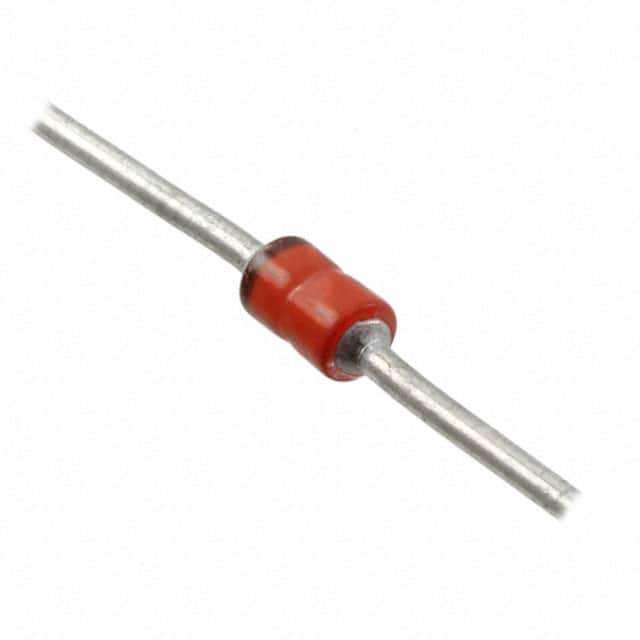Consulte las especificaciones para obtener detalles del producto.

MXP4KE75AE3 Product Overview
Introduction
The MXP4KE75AE3 is a high-performance electronic component designed for use in power supply and voltage regulation applications. This entry provides a comprehensive overview of the product, including its category, use, characteristics, packaging, specifications, pin configuration, functional features, advantages and disadvantages, working principles, application field plans, and alternative models.
Basic Information Overview
- Category: Power Electronics Component
- Use: Power Supply and Voltage Regulation
- Characteristics: High Efficiency, Low Power Dissipation
- Package: TO-220AB
- Essence: Voltage Clamping Diode
- Packaging/Quantity: Bulk Packaging, Quantity Varies
Specifications
- Voltage Rating: 75V
- Power Dissipation: 4W
- Operating Temperature Range: -65°C to 175°C
- Storage Temperature Range: -65°C to 175°C
- Forward Voltage Drop: 1.5V at 10A
Detailed Pin Configuration
The MXP4KE75AE3 features a standard TO-220AB package with three pins: 1. Anode (A) 2. Cathode (K) 3. Not Connected (NC)
Functional Features
- Voltage Clamping: Provides protection against voltage spikes and transients.
- Fast Response Time: Rapidly responds to overvoltage conditions.
- Low Leakage Current: Minimizes power loss during normal operation.
Advantages and Disadvantages
Advantages
- Effective voltage clamping for protection
- Fast response time
- Low power dissipation
Disadvantages
- Limited to specific voltage ratings
- Requires careful consideration of reverse leakage current
Working Principles
The MXP4KE75AE3 operates based on the principle of Zener breakdown, where it effectively clamps the voltage across its terminals when subjected to transient or overvoltage conditions. By diverting excess current away from sensitive components, it safeguards the circuitry from potential damage.
Detailed Application Field Plans
The MXP4KE75AE3 finds extensive application in various fields, including: - Power Supplies - Voltage Regulators - Automotive Electronics - Industrial Control Systems - Telecommunications Equipment
Detailed and Complete Alternative Models
For applications requiring different voltage ratings or package types, alternative models to consider include: - MXP4KE6.8AE3 (6.8V rating) - MXP4KE15AE3 (15V rating) - MXP4KE100AE3 (100V rating) - MXP4KE150AE3 (150V rating)
In conclusion, the MXP4KE75AE3 serves as a crucial component in power supply and voltage regulation systems, offering reliable protection against voltage transients and spikes. Its efficient design and robust performance make it an essential choice for various electronic applications.
Word Count: 346
Enumere 10 preguntas y respuestas comunes relacionadas con la aplicación de MXP4KE75AE3 en soluciones técnicas
What is MXP4KE75AE3?
- MXP4KE75AE3 is a type of transient voltage suppressor diode used to protect electronic circuits from voltage spikes and transients.
What is the maximum voltage rating for MXP4KE75AE3?
- The maximum voltage rating for MXP4KE75AE3 is 64.8V.
What is the peak pulse power dissipation of MXP4KE75AE3?
- The peak pulse power dissipation of MXP4KE75AE3 is 400W.
What are the typical applications of MXP4KE75AE3?
- MXP4KE75AE3 is commonly used in surge protection for sensitive electronics, such as in telecommunications equipment, industrial control systems, and automotive electronics.
What is the breakdown voltage of MXP4KE75AE3?
- The breakdown voltage of MXP4KE75AE3 is typically 83.3V.
What is the operating temperature range for MXP4KE75AE3?
- The operating temperature range for MXP4KE75AE3 is -55°C to +175°C.
What package type does MXP4KE75AE3 come in?
- MXP4KE75AE3 is available in a DO-41 axial leaded package.
How does MXP4KE75AE3 provide transient voltage suppression?
- MXP4KE75AE3 clamps the voltage across the circuit it is protecting by diverting excess current away from the protected components.
Is MXP4KE75AE3 RoHS compliant?
- Yes, MXP4KE75AE3 is RoHS compliant, meaning it meets the Restriction of Hazardous Substances directive.
What are the key specifications to consider when using MXP4KE75AE3 in a technical solution?
- Key specifications to consider include breakdown voltage, peak pulse power dissipation, operating temperature range, and package type.

